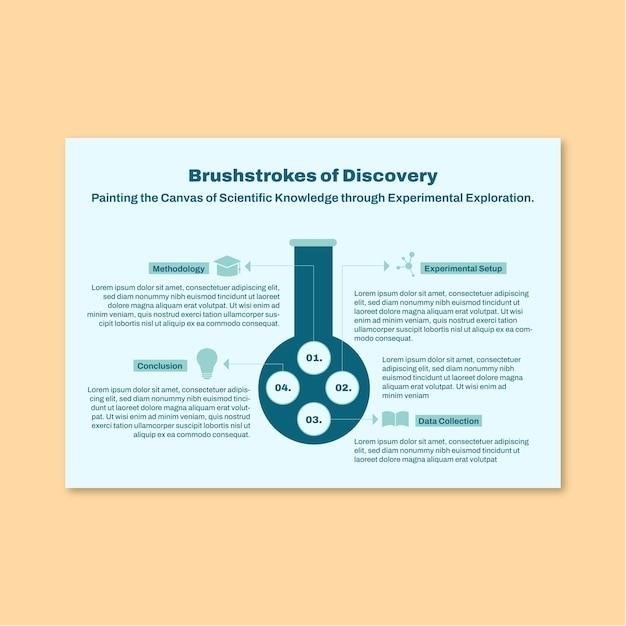
Understanding Pathophysiology Study Guides⁚ A Comprehensive Overview
Pathophysiology study guides offer comprehensive support for mastering complex concepts. PDF versions provide convenient access to key information, interactive exercises, and case studies, enhancing learning and exam preparation.
Available Study Guides and Workbooks
Numerous pathophysiology study guides and workbooks are available in PDF format, offering diverse learning approaches. Many directly correlate with popular textbooks like Huether’s Understanding Pathophysiology, providing chapter-by-chapter reinforcement. These resources often include a wide array of activities, thousands of interactive questions, and practical exercises to solidify understanding. Some focus on specific organ systems or disease processes, while others offer a more holistic approach covering cellular mechanisms and clinical manifestations. The availability of these diverse resources allows students to select a study guide that best complements their learning style and the specific needs of their course. Look for features like case studies, self-assessment quizzes, and detailed explanations to maximize learning effectiveness. Remember to check reviews and compare features before making a purchase decision.
Popular Textbook Companions
Many popular pathophysiology textbooks have accompanying study guides available as PDFs. These companions often mirror the textbook’s chapter structure, providing a convenient review tool. They typically include key concept summaries, practice questions in various formats (multiple choice, true/false, fill-in-the-blank), and sometimes even case studies to apply learned knowledge. Examples include study guides for Huether and McCance’s Understanding Pathophysiology and Banasik’s Pathophysiology. These resources are invaluable for reinforcing core concepts, identifying areas needing further study, and preparing for exams. The direct correlation to the textbook ensures alignment with course content, making them a highly effective study aid for students. Choosing a study guide that complements your textbook can significantly boost your understanding and retention of the material.
Key Features of Effective Study Guides
Effective pathophysiology study guides, especially those in PDF format, share several key characteristics. A well-structured guide mirrors the textbook’s organization, offering chapter-by-chapter summaries and reinforcement activities. Interactive elements, such as fill-in-the-blank exercises, true/false questions, and multiple-choice quizzes, actively engage the learner; Inclusion of diverse question types ensures comprehensive assessment of understanding. Clear and concise explanations of complex concepts are crucial, avoiding jargon and presenting information in an easily digestible manner. Visual aids like diagrams and illustrations can further enhance comprehension, particularly for visually oriented learners. Finally, the availability of case studies allows students to apply their knowledge to real-world scenarios, strengthening their critical thinking and problem-solving skills.
Utilizing Study Guides for Optimal Learning
Maximize your learning by actively engaging with the study guide’s content. Consistent review, practice questions, and self-testing are vital for success.
Interactive Question Formats
Many pathophysiology study guides utilize a variety of interactive question formats to enhance learning and knowledge retention. These formats go beyond simple rote memorization and encourage deeper engagement with the material. Multiple-choice questions test factual recall, while fill-in-the-blank questions require a more precise understanding of concepts. Matching exercises help students connect related terms and ideas, strengthening their comprehension. True/false questions challenge students to critically evaluate statements, promoting careful consideration of the material’s nuances. Case studies present real-world scenarios that require students to apply their knowledge to solve problems, fostering a more practical understanding of pathophysiology. The diverse range of question types ensures a comprehensive assessment of understanding and promotes active learning, ultimately leading to better retention and improved performance.
Effective Study Strategies and Techniques
Utilizing a pathophysiology study guide effectively involves employing proven study strategies. Active recall, a technique where you test yourself on the material without looking at your notes, significantly improves retention. Spaced repetition, reviewing material at increasing intervals, reinforces long-term memory. The Feynman Technique, explaining concepts in simple terms as if teaching someone else, reveals areas where understanding is weak. Interleaving, mixing different topics during study sessions, improves the ability to discriminate between concepts. Practice questions, found in many study guides, are crucial for identifying knowledge gaps and applying learned information. Creating flashcards, summarizing key concepts concisely, aids in memorization. Regular review sessions, spaced throughout the learning process, strengthen memory consolidation. Combining these methods with the structured format of a study guide optimizes learning and prepares students for assessments.
Utilizing Case Studies and Scenarios
Many pathophysiology study guides incorporate case studies and scenarios to enhance understanding and application of concepts. These real-world examples bridge the gap between theoretical knowledge and practical application, allowing students to diagnose problems and develop treatment plans. Analyzing case studies helps students to identify key symptoms, recognize disease processes, and understand the interplay of different physiological systems. Working through scenarios forces active engagement with the material, promoting deeper comprehension than passive reading. By actively applying their knowledge to these situations, students develop critical thinking skills essential for clinical practice. The ability to connect theoretical knowledge to real patient presentations is a valuable skill that improves clinical reasoning and problem-solving abilities. Effectively utilizing case studies is therefore a crucial element of mastering pathophysiology.
Content Covered in Pathophysiology Study Guides
Comprehensive guides cover cellular mechanisms, organ system pathophysiology, clinical manifestations, and diagnostic approaches to disease processes.
Cellular and Molecular Mechanisms of Disease
A thorough pathophysiology study guide delves into the intricate cellular and molecular underpinnings of disease. It meticulously explains how disruptions at the cellular level—from genetic mutations and epigenetic modifications to impaired signaling pathways and organelle dysfunction—initiate and propagate disease processes. The guide clarifies how these molecular events manifest as observable clinical symptoms and signs. It connects the microscopic world of cellular abnormalities to the macroscopic realm of patient presentation, building a robust understanding of disease etiology and progression. Furthermore, the guide often incorporates illustrative diagrams, tables, and clinical case studies to reinforce the complex interrelationships between molecular mechanisms and disease phenotypes. This approach enhances comprehension and retention of this crucial pathophysiological information.
Organ System-Specific Pathophysiology
Effective pathophysiology study guides dedicate significant attention to organ system-specific pathologies. They systematically examine the unique disease processes affecting each organ system, detailing the mechanisms of dysfunction and resultant clinical manifestations. For example, cardiovascular pathologies are explained in detail, covering conditions such as atherosclerosis, heart failure, and arrhythmias. Similarly, respiratory disorders like asthma, pneumonia, and chronic obstructive pulmonary disease are explored, highlighting their distinct pathophysiological pathways. The guides often integrate detailed diagrams and illustrations of affected organs and tissues, facilitating a deeper understanding of the spatial and temporal aspects of disease progression. This approach ensures comprehensive coverage of organ-specific pathophysiology, enabling students to grasp the complexities of disease within the context of the whole body.
Clinical Manifestations and Diagnostic Approaches
A well-structured pathophysiology study guide will thoroughly cover the clinical presentation of diseases. This includes a detailed explanation of the signs and symptoms associated with specific conditions, correlating them to the underlying pathophysiological mechanisms. For instance, the guide might describe the characteristic symptoms of diabetes mellitus, such as polyuria, polydipsia, and polyphagia, explaining how these arise from insulin deficiency or resistance. Furthermore, diagnostic methods used to identify and monitor these diseases are discussed, covering various techniques like blood tests, imaging studies, and biopsies. The rationale behind the selection of specific diagnostic tools is explained, emphasizing the importance of correlating clinical findings with laboratory and imaging results for accurate diagnosis and management. This integrated approach strengthens the understanding of the clinical picture and the diagnostic process in pathophysiology.
Resources for Further Learning
Expand your knowledge with online databases, recommended textbooks, and supplementary learning materials readily available for deeper understanding.
Online Resources and Databases
Numerous online resources and databases offer valuable supplementary information for pathophysiology study guides. These digital platforms often provide access to interactive learning modules, detailed case studies, and updated research articles, enhancing the learning experience beyond the textbook. Reputable medical websites, online encyclopedias, and professional medical journals can serve as excellent resources. Many universities and medical schools also offer online learning materials, including video lectures, interactive simulations, and practice exams specifically designed to support pathophysiology education. Utilizing these diverse resources can significantly improve comprehension and retention of complex concepts. Remember to evaluate the credibility and accuracy of online sources carefully to ensure reliable information for your studies. Always cross-reference information with your textbook and other trusted resources.
Recommended Textbooks and References
Beyond the core pathophysiology textbook, several supplemental resources can significantly enrich your understanding. Consider exploring well-regarded textbooks focusing on specific areas within pathophysiology, such as immunology, pharmacology, or microbiology. These specialized texts offer in-depth coverage, providing a more nuanced comprehension of complex disease mechanisms. Furthermore, reputable medical journals and review articles offer the most up-to-date research findings and clinical applications of pathophysiological principles. These publications often present cutting-edge discoveries, expanding your knowledge base beyond the scope of introductory textbooks. Remember to prioritize peer-reviewed publications from established medical journals for the most reliable and accurate information. Using a combination of textbooks and journals ensures a comprehensive approach to learning pathophysiology.
Additional Learning Materials
To supplement your textbook and study guide, consider exploring a range of additional learning materials. Interactive online resources, such as video lectures and simulations, can provide engaging and dynamic ways to learn complex concepts. Many websites and educational platforms offer free or subscription-based access to these resources. Furthermore, consider using flashcards or creating your own mind maps to reinforce key terms and definitions. These visual learning tools can aid memory and understanding. Don’t overlook the potential benefits of joining online study groups or forums. Collaborating with peers can provide different perspectives, clarify confusion, and enhance overall learning through discussion and shared problem-solving. Remember to utilize diverse learning methods to maximize comprehension and retention.

Mastering Pathophysiology⁚ A Step-by-Step Approach
Consistently review materials, utilize active recall techniques, and engage in collaborative learning for optimal pathophysiology comprehension.
Developing a Consistent Study Schedule
Creating a structured study schedule is crucial for effective learning. Allocate specific time slots for reviewing pathophysiology concepts, working through practice questions, and engaging with online resources. Break down large study sessions into manageable chunks to prevent burnout and maintain focus. Consistency is key; aim for regular, shorter study periods rather than infrequent, lengthy ones. A well-organized schedule, perhaps using a planner or digital calendar, allows for efficient time management and ensures consistent engagement with the material. Prioritize topics based on difficulty and exam weighting, allocating more time to challenging areas. Regularly review and adjust your schedule to adapt to your learning pace and identify areas requiring more attention. Remember to incorporate breaks for rest and relaxation to optimize learning and prevent fatigue. A well-planned study schedule not only enhances understanding but also reduces stress levels associated with intensive learning periods. This approach maximizes learning efficiency and improves overall performance.
Active Recall and Practice Questions
Active recall is a highly effective study technique. Instead of passively rereading notes, actively test yourself. Use flashcards, practice questions, or create quizzes to retrieve information from memory. This strengthens memory consolidation. Many pathophysiology study guides include a wealth of practice questions in various formats, such as multiple-choice, true/false, and fill-in-the-blank. These questions test your understanding of key concepts and help identify knowledge gaps. Regularly reviewing and practicing with these questions reinforces learning and improves retention. Focus on understanding the underlying principles and reasoning behind the answers, not just memorizing facts. Analyze incorrect answers to pinpoint weaknesses and improve comprehension. Use spaced repetition to revisit previously learned material at increasing intervals. This technique boosts long-term retention and enhances overall performance. Active recall, combined with consistent practice, optimizes learning and prepares you for assessments.
Seeking Clarification and Collaboration
Don’t hesitate to seek clarification when encountering challenging concepts in your pathophysiology studies. Utilize the resources available to you, such as instructors, teaching assistants, or online forums. Forming study groups with peers can be incredibly beneficial. Collaborative learning allows you to discuss complex topics, explain concepts to each other, and gain different perspectives. Explaining a concept to someone else solidifies your own understanding. Working through practice problems together can also be highly effective. If your study guide includes case studies, consider analyzing them collaboratively to develop a comprehensive understanding of the pathophysiological processes involved. Remember that effective learning is often a collaborative process, and seeking help is a sign of strength, not weakness. Embrace opportunities for discussion and collaboration to enhance your comprehension and retention of complex pathophysiological information.
